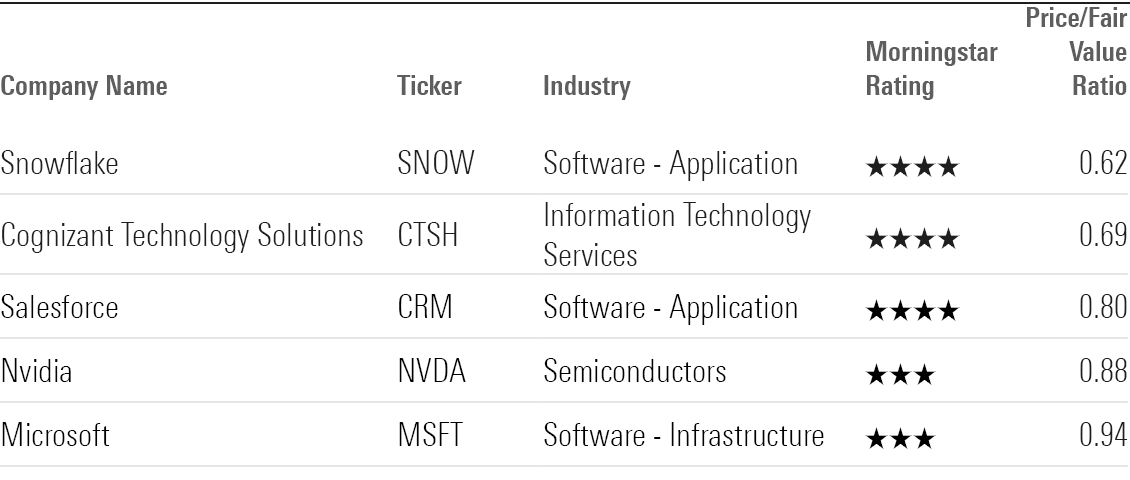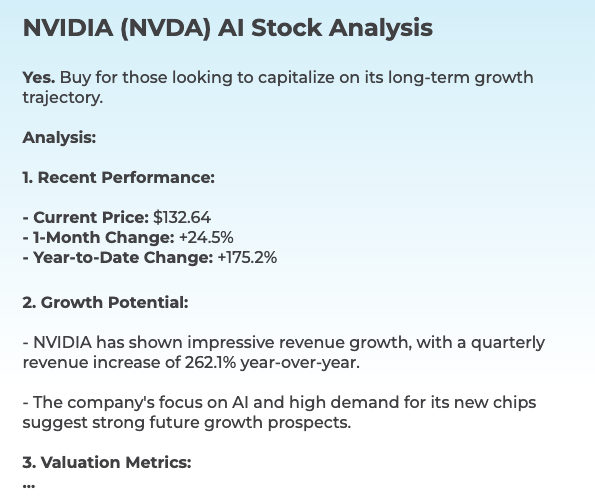20 Best Suggestions To Picking AI Stock Picker Analysis Sites
20 Best Suggestions To Picking AI Stock Picker Analysis Sites
Blog Article
Top 10 Tips On Assessing The Ai And Machine Learning Models Of Ai Platform For Analyzing And Predicting Trading Stocks
Assessing the AI and machine learning (ML) models employed by stock prediction and trading platforms is crucial to ensure they deliver precise, reliable, and actionable insights. Models that are poorly designed or has been exaggerated can result in inaccurate forecasts and financial losses. These are the top ten guidelines for evaluating the AI/ML models of these platforms:
1. The model's purpose and approach
A clear objective: determine whether the model was designed to be used for trading in the short term, long-term investing, sentiment analysis or risk management.
Algorithm disclosure: Find out if the platform discloses which algorithms it uses (e.g. neural networks or reinforcement learning).
Customizability: Determine whether the model could be customized to suit your particular investment strategy or risk tolerance.
2. Analyze model performance metrics
Accuracy: Check the accuracy of the model when it comes to the prediction of future events. However, don't solely depend on this measurement as it may be inaccurate when applied to financial markets.
Recall and precision: Determine whether the model is able to detect true positives, e.g. correctly predicted price changes.
Risk-adjusted results: Evaluate the impact of model predictions on profitable trading despite the accounting risk (e.g. Sharpe, Sortino, etc.).
3. Make sure you test your model using backtesting
Performance historical Test the model using historical data to check how it performs under previous market conditions.
Tests with data that were not being used to train To avoid overfitting, test the model using data that was not previously used.
Scenario Analysis: Review the model's performance under different market conditions.
4. Make sure you check for overfitting
Signs of overfitting: Search for models that perform extremely well on training data but struggle with data that isn't seen.
Regularization techniques: Verify if the platform uses techniques like L1/L2 regularization or dropout to avoid overfitting.
Cross-validation. The platform must perform cross validation to test the generalizability of the model.
5. Examine Feature Engineering
Relevant features: Check if the model uses relevant features (e.g., volume, price technical indicators, sentiment data macroeconomic factors, etc.).
Selecting features: Ensure that the system chooses features that are statistically significant and eliminate irrelevant or redundant information.
Updates to features that are dynamic: Check whether the model will be able to adjust to changing market conditions or new features over time.
6. Evaluate Model Explainability
Interpretability: The model should provide clear explanations to its predictions.
Black-box model Beware of applications that employ models that are too complicated (e.g. deep neural networks) without describing tools.
User-friendly insights: Find out if the platform provides actionable insights in a format that traders can comprehend and utilize.
7. Reviewing the Model Adaptability
Market conditions change - Check that the model can be modified to reflect changing market conditions.
Continuous learning: Make sure that the system updates the model often with fresh data to boost performance.
Feedback loops: Make sure the platform incorporates user feedback or actual results to improve the model.
8. Look for Bias and fairness
Data bias: Ensure that the training data are representative of the market and free of bias (e.g. overrepresentation in certain times or in certain sectors).
Model bias: Make sure that the platform monitors the model biases and reduces them.
Fairness: Make sure the model does not disproportionately favor or disadvantage certain stocks, sectors, or trading styles.
9. Examine the Computational Effectiveness
Speed: See if you can make predictions using the model in real-time.
Scalability - Verify that the platform can handle huge datasets, many users and still maintain performance.
Resource usage : Determine if the model has been optimized to use computational resources effectively (e.g. GPU/TPU).
10. Review Transparency and Accountability
Model documentation: Verify that the platform offers complete documentation about the model's design, the process of training and its limitations.
Third-party audits: Determine whether the model has been independently validated or audited by third-party audits.
Error Handling: Verify whether the platform has mechanisms to identify and correct mistakes in models or failures.
Bonus Tips
User reviews and case studies: Use user feedback and case studies to assess the actual performance of the model.
Free trial period: Test the model's accuracy and predictability by using a demo or a free trial.
Customer support - Make sure that the platform is able to provide robust support in order to resolve problems related to model or technical issues.
These guidelines will help you evaluate the AI and machine learning models that are used by platforms for stock prediction to make sure they are trustworthy, transparent and aligned with your goals for trading. View the recommended ai trade for blog info including ai for investing, using ai to trade stocks, ai for trading, ai for investing, best ai stock trading bot free, ai chart analysis, ai stock market, ai stock, ai stock trading app, ai for investing and more.
Top 10 Tips For Evaluating The Trial And Flexible Of Ai Stock Analysing Trading Platforms
It is crucial to assess the flexibility and trial features of AI-driven stock prediction and trading platforms before you sign up for a subscription. Here are 10 top tips for evaluating these aspects.
1. Try a Free Trial
TIP: Ensure that the platform you're considering provides a free trial of 30 days to test the features and capabilities.
Why? You can try the platform without cost.
2. Trial Duration and Limitations
Verify the duration of the trial, and any restrictions.
The reason is that understanding the constraints of trials will allow you to decide if the trial is thorough.
3. No-Credit-Card Trials
Search for free trials that don't ask you for your credit card's number in advance.
The reason is that it reduces the possibility of unexpected costs and makes it simpler to decide whether or not you want to.
4. Flexible Subscription Plans
TIP: Make sure that the platform offers flexibility in subscriptions (e.g. quarterly, annually, monthly) and clear pricing different tiers.
Why: Flexible plan options allow you to customize your commitment to suit your needs and budget.
5. Customizable Features
Check whether the platform offers the ability to customize options, like alerts and levels of risk.
The importance of customization is that it allows the platform's functionality to be tailored to your specific trading needs and preferences.
6. Simple cancellation
Tip Take note of the ease in cancelling or reducing a subcription.
The reason: A simple cancellation process can ensure you don't get stuck on a plan you don't like.
7. Money-Back Guarantee
TIP: Find platforms that offer a guarantee of refund within a certain time.
What is the reason? It offers a safety net in case the platform does not meet your expectations.
8. All Features Available During Trial
Check whether you have access to all features included in the trial version, not just a limited edition.
The reason: Trying out the full functionality will help you make a more informed decision.
9. Support for Customer Service during Trial
Tips: Assess the quality of customer support provided throughout the trial time.
You can get the most out of your trial experience with reliable assistance.
10. Post-Trial Feedback System
Find out if your platform is seeking feedback to improve services after the trial.
Why is that a platform that valuess the user's feedback is more likely to grow and be able to meet the needs of users.
Bonus Tip: Scalability options
As your trading activity grows, you may need to modify your plan or add additional features.
When you carefully evaluate these options for flexibility and trial, you can make an informed decision about the possibility of deciding if an AI trading and stock prediction platform is a good choice for your requirements prior to making an investment. Follow the best ai software stocks tips for website advice including ai stock prediction, best ai stocks, trading ai tool, ai tools for trading, stocks ai, how to use ai for copyright trading, free ai stock picker, investing with ai, ai stock trader, chart ai trading and more.